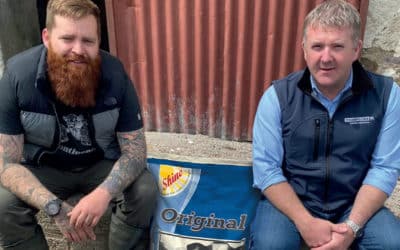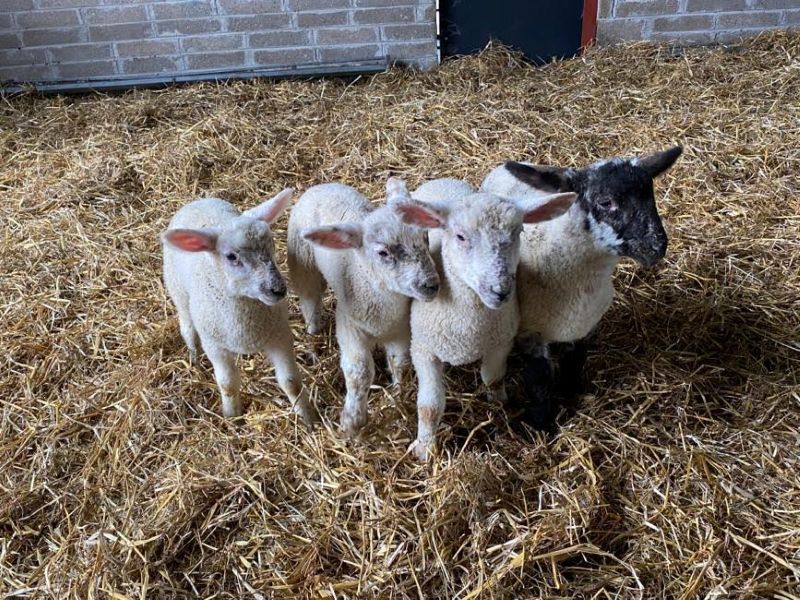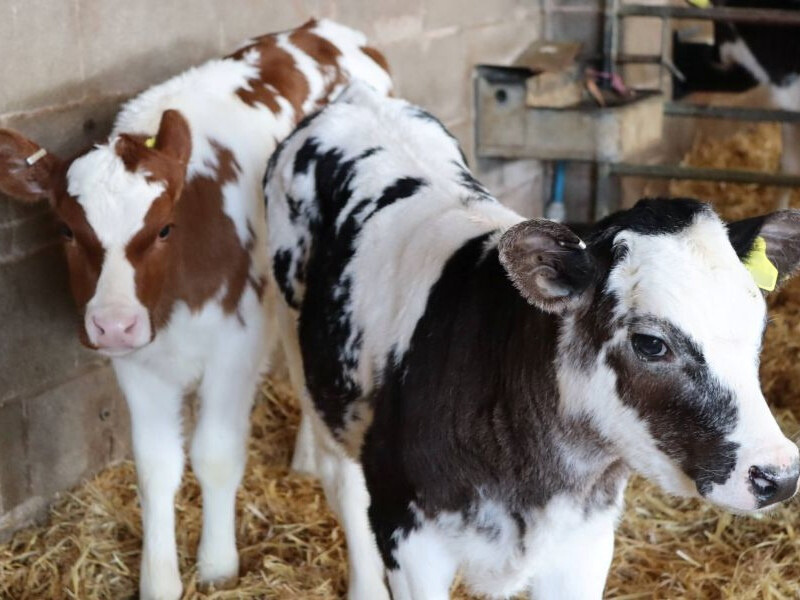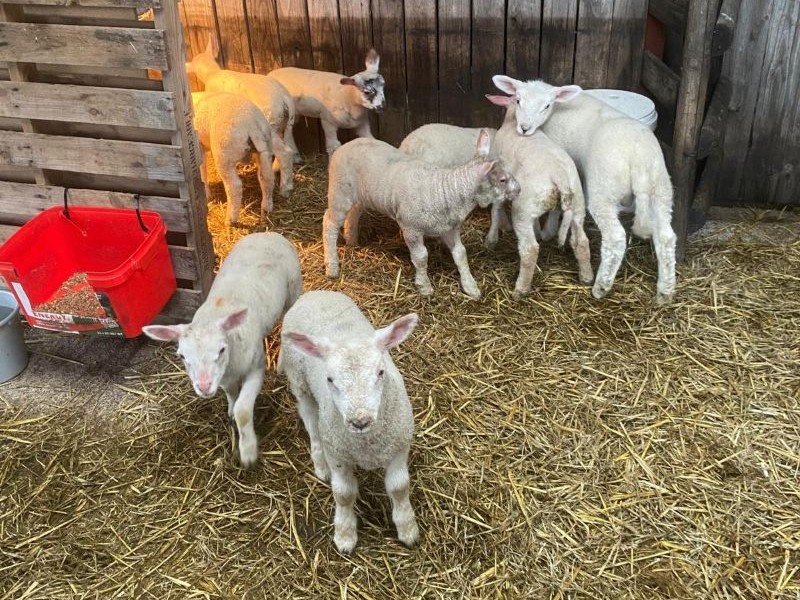Calves weaning up to 10 days earlier on Shine Original replacer
Robert Martin and his son-in-law, Glen Crooks, run a beef enterprise near Moy, rearing 150 calves a year. While most are finished, some heifers are retained as suckler replacements and later sold as bulling heifers.

The business buys mostly Hereford and British Blue calves from four different farms but also some Aberdeen Angus, Limousin, Simmental, and Charolais Culards too. Glen, who oversees calf rearing, had previously used several twice-daily milk replacer formulas before switching to Shine Original.
Cost vs. Benefit
Although Shine Original’s skim-based formula is more expensive than whey-based alternatives, Glen says this cost is recovered in multiple ways.
“Feeding Original gives me more time to rear the calves and, weaning on dry feed intake, means I am weaning 8-10 days sooner than before so the cost is probably no higher than using a cheaper powder,’’ Glen explains.
Rearing system
The rearing system revolves around keeping calves in optimum health from the moment they arrive. Initially, calves are housed in single pens, to allow close observation and to get them used to drinking from a teat.
From the start, they are introduced to Shine Original milk replacer and Super Gro pellets from Thompsons (Belfast). The pellets were recommended by Thompsons representative, Barry Chambers, who describes them as the best on the market for the health of young calves. Pellets, straw and water are all fed ad lib.
Health and hygiene practices
Keeping calves healthy and content are Glen’s top priorities. There are solid barriers between every two calf pens and a footbath is used by anyone entering the calf houses. Glen will only enter a pen if he has to, and wears surgical gloves when doing so.
Strict hygiene is also applied to feeding. There is no sharing of teats and all are boiled-washed and disinfected after each feed. In addition, all calves are vaccinated and receive a multi vitamin injection while in their individual pens. Glen regularly inspects each calf pen and the calf’s back end for any sign of looseness.


